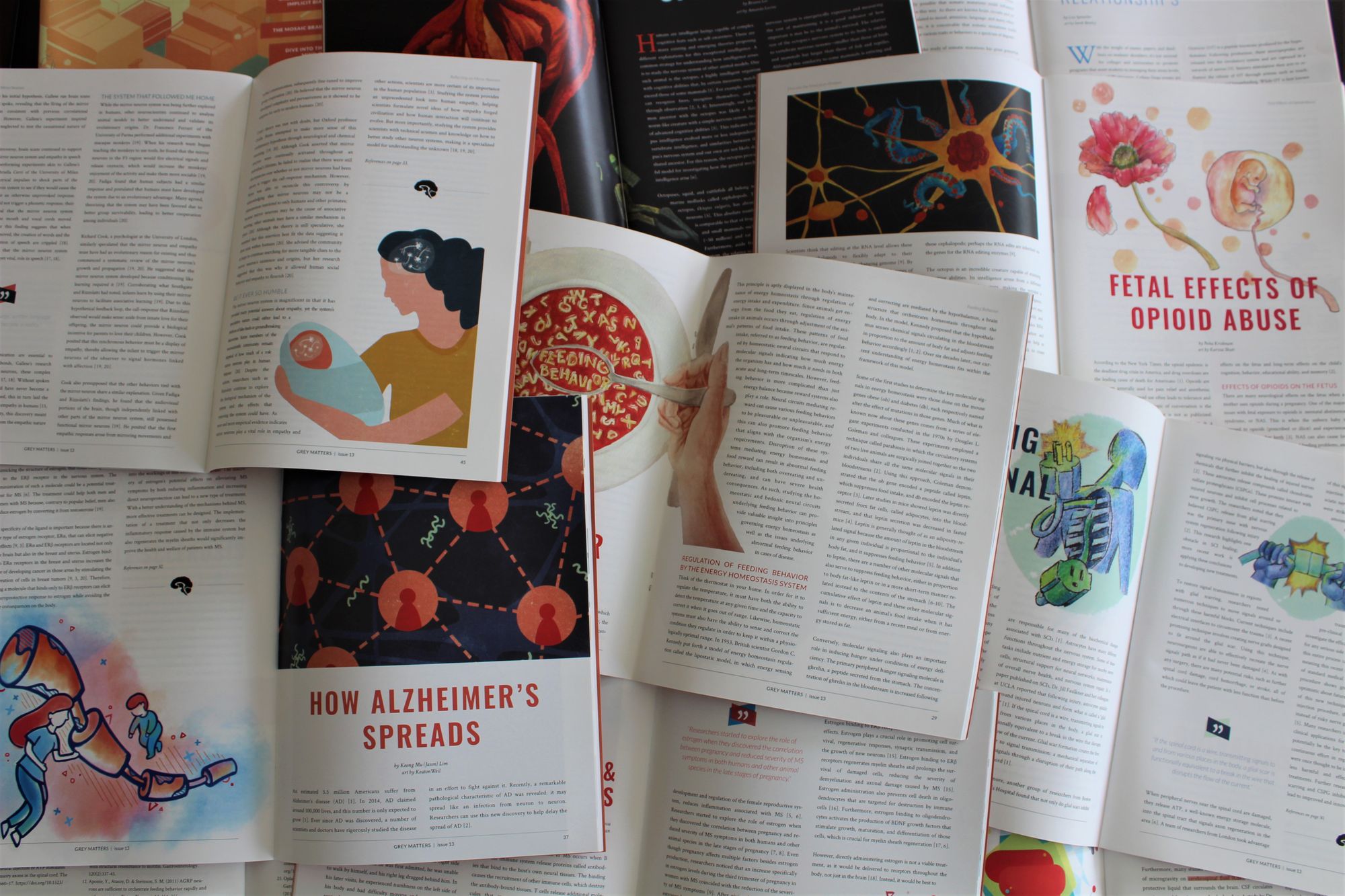
Grey Matters is a neuroscience outreach organization founded by students at the University of Washington on the core belief that science education should be accessible to everyone, regardless of educational background. Each quarter, we publish a free, high-quality neuroscience journal that is written, edited, illustrated, and designed entirely by undergraduate students. Grey Matters also hosts An Evening with Neuroscience, an annual event dedicated to fostering an exciting and inclusive space for neuroscience education for the general public, as well as educational neuroscience events at local high schools. We also have a journal club run by and for undergraduates to improve scientific literacy and communication.
Our Mission
Grey Matters’ mission is to enhance public understanding of neuroscience, to encourage greater participation in the scientific community, and to develop skilled science communicators via collaborative publications. Grey Matters envisions itself as a diverse community where students feel empowered to read and understand scientific literature, communicate their findings effectively, and build interpersonal skills through teamwork.
Through our publications, Grey Matters incorporates disciplines ranging from art and design to English and philosophy. This diverse structure allows us to create a unique and appealing publication while helping students develop professional skills that will serve them both within the scientific community as well as in their own disciplines. Because our issues are a meld of creative writing and artistic interpretations of science, we’ve created a niche for ourselves as a journal that seeks to spark fascination with neuroscience as much as it seeks to educate.
Currently in our 10th year, Grey Matters Journal has mentored and worked with over 1,000 undergraduate students, published 20 issues comprised of over 200 articles, and amassed nearly 250,000 views on our website. An Evening with Neuroscience reliably hosts several hundred people annually. Still, much work is yet to be done in service of our mission, and we look forward to reaching greater heights.
Accessibility
Academic fields such as neuroscience are notoriously gate-kept, reserved for those with higher education or for researchers. Many articles are costly and often contain scientific jargon that a lay reader may not understand. To dismantle these barriers of access, Grey Matters is committed to producing free science publications that preserve the integrity of research while being geared for the general public to read. Our team is built of many students from a range of grade-levels and disciplines, and special focus is given to creating beautiful art pieces that help make scientific articles easier to digest. This interdisciplinary, teamwork-based approach allows us to educate undergraduates, build community, and create an incredible publication. We hope our articles will inspire the next generation of scientists to pursue research with equity and accessibility in mind.
At our events, we make sure to provide closed captioning, interpreters, accessible seating, and any other accommodations to ensure that everyone can have the best experience possible. On all of our platforms, we strive to create inclusive and accessible content for a diverse audience.
We are always open to improving this aspect of our outreach to the public. Should you have any suggestions for how we can better facilitate access to our issues and events, please contact us at thalamus@greymattersjournal.org.
Mentoring Undergraduates
Most undergraduate journals have students submit completed articles for review and publication. Instead, at Grey Matters, we ask interested writers to submit an article proposal, which outlines a topic of interest. Upon review and acceptance, our writers are paired with undergraduate editors to help them develop and refine their writing, as well as undergraduate artists who work with them to design illustrations that complement their article. This model allows us to mentor students as they become better writers, editors, artists, and learners through team-based collaboration.